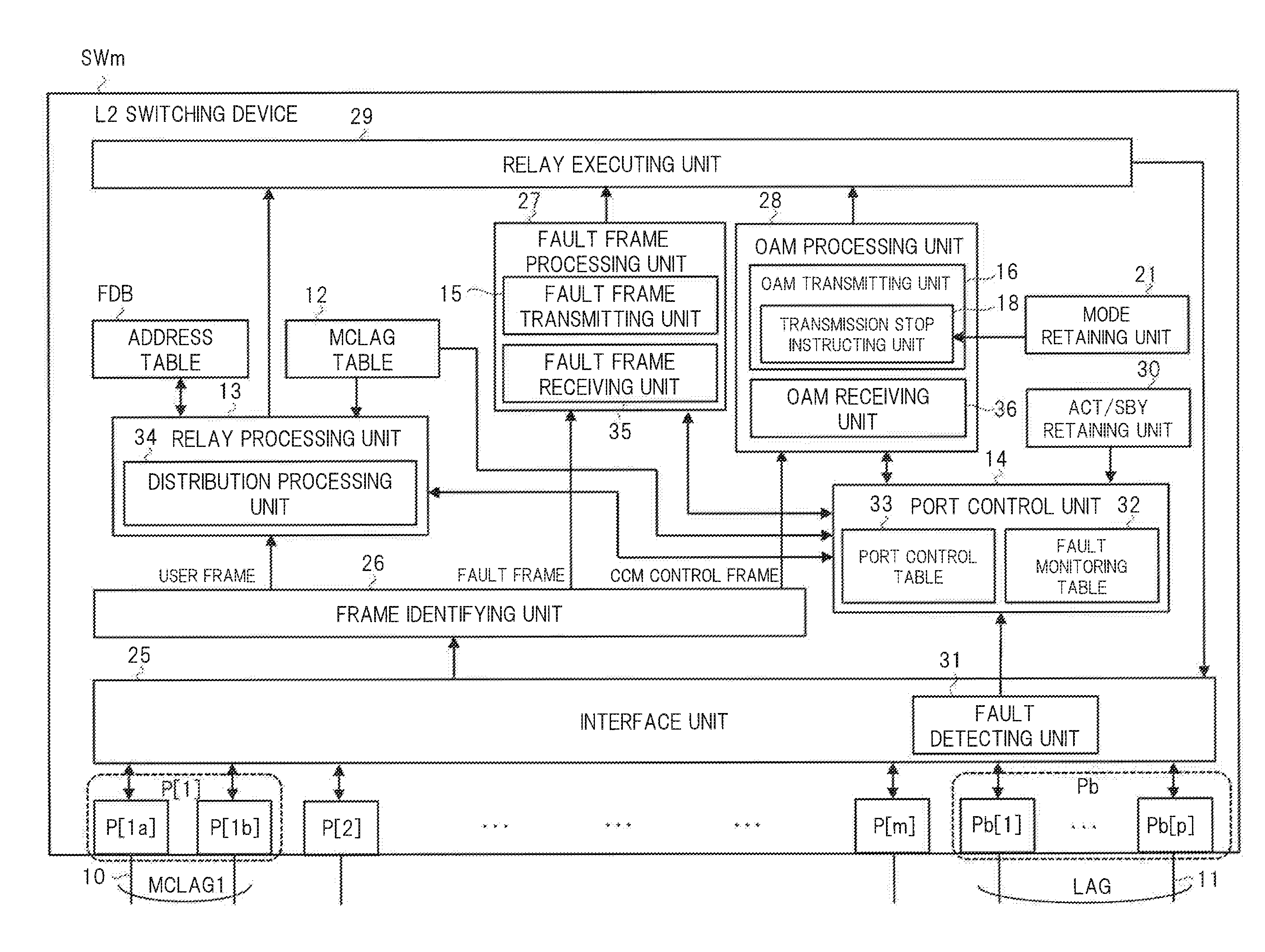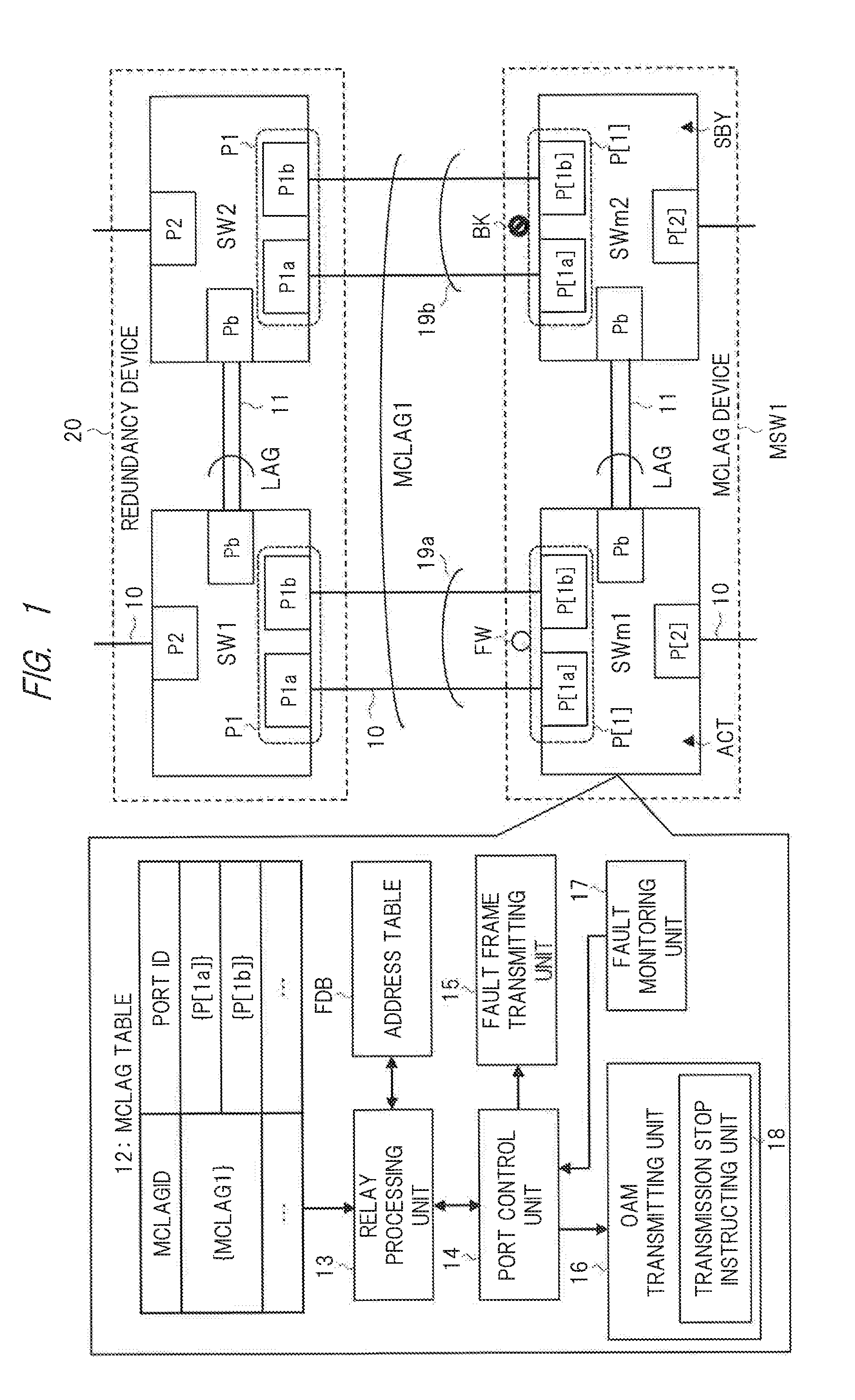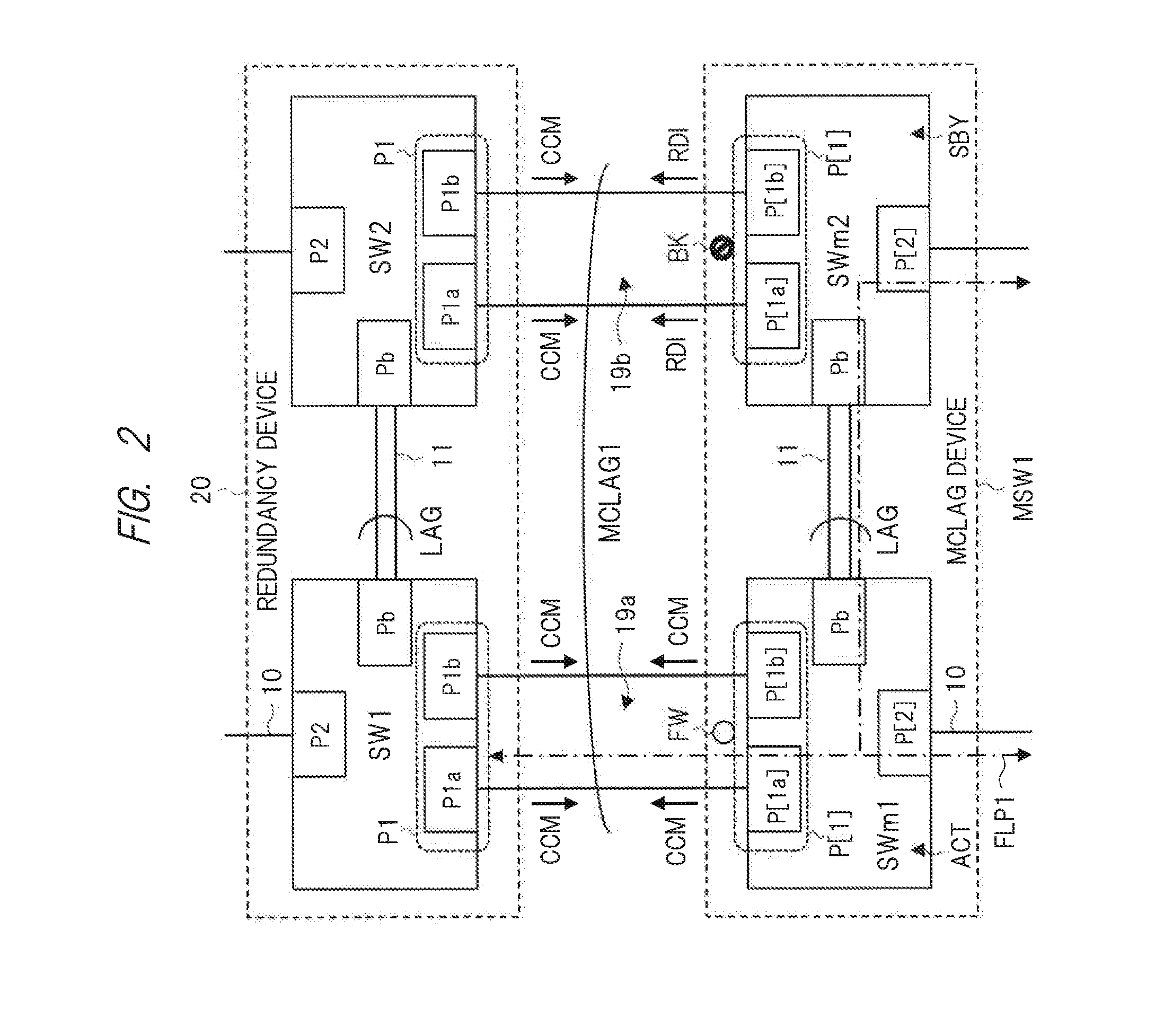Relay System and Switching Device
a switching device and relay technology, applied in the field of relay systems and switching devices, can solve problems such as difficult to sufficiently grasp frame transfer paths, communication congestion, and network management, and achieve the effect of facilitating network managemen
- Summary
- Abstract
- Description
- Claims
- Application Information
AI Technical Summary
Benefits of technology
Problems solved by technology
Method used
Image
Examples
first embodiment
[0032]>
[0033]FIG. 1 is a schematic diagram of a configuration example of a relay system according to the first embodiment of the present invention. The relay system of FIG. 1 includes a MCLAG device (first redundancy device) MSW1 to which an inter-device LAG is applied and a redundancy device (second redundancy device) 20 to which an inter-device LAG is applied and which is connected to the MCLAG device MSW1. The MCLAG device MSW1 is made up of two L2 switching devices (first and second switching devices) SWm1 and SWm2 and the redundancy device 20 is also made up of two L2 switching devices (third and fourth switching devices) SW1 and SW2.
[0034]Each of the L2 switching devices SWm1 and SWm2 constituting the MCLAG device MSW1 has a MCLAG port group (first port group) P[1], a port (second port) P[2] and a bridge port Pb. The MCLAG port group P[1] is made up of one or a plurality of (in this case, two) MCLAG ports (first ports) P[1a] and P[1b]. The L2 switching device (first switching ...
second embodiment
[0110]>
[0111]FIG. 5 is a schematic diagram of a configuration example of a relay system according to the second embodiment of the present invention. The relay system shown in FIG. 5 is different from the relay system shown in FIG. 1 in that a MCLAG device MSW2 having the same configuration as that of the MCLAG device MSW1 is provided as the redundancy device 20 of FIG. 1. The MCLAG device MSW2 is made up of two L2 switching devices (third and fourth switching devices) SWm3 and SWm4.
[0112]Each of the L2 switching devices SWm3 and SWm4 constituting the MCLAG device MSW2 has a MCLAG port group P[1], a port P[2] and a bridge port Pb like the L2 switching devices SWm1 and SWm2. The MCLAG port group P[1] is made up of one or a plurality of (in this case, two) MCLAG ports P[1a] and P[1b]. The L2 switching device (third switching device) SWm3 and the L2 switching device (fourth switching device) SWm4 are connected by a communication line 11 via the bridge ports Pb.
[0113]The L2 switching dev...
third embodiment
[0147]In the third embodiment, details of the L2 switching devices of the first embodiment and the second embodiment will be described.
[0148]>
[0149]FIG. 10 is a block diagram showing a configuration example of the principal part of each switching device constituting a MCLAG device in a switching device according to the third embodiment of the present invention. Here, each of the L2 switching devices SWm1 to SWm4 constituting the MCLAG device in the relay system of FIG. 5 is taken as an example. FIG. 11A is a schematic diagram of a configuration example of the address table of FIG. 10, FIG. 11B is a schematic diagram of a configuration example of a fault monitoring table of FIG. 10, and FIG. 11C is a schematic diagram of a configuration example of a port control table of FIG. 10.
[0150]The L2 switching device (first or second switching device) SWm shown in FIG. 10 includes a MCLAG port group (first port group) P[1], a plurality of ports P[2] to P[m], the bridge port Pb, various proces...
PUM
 Login to View More
Login to View More Abstract
Description
Claims
Application Information
 Login to View More
Login to View More - R&D
- Intellectual Property
- Life Sciences
- Materials
- Tech Scout
- Unparalleled Data Quality
- Higher Quality Content
- 60% Fewer Hallucinations
Browse by: Latest US Patents, China's latest patents, Technical Efficacy Thesaurus, Application Domain, Technology Topic, Popular Technical Reports.
© 2025 PatSnap. All rights reserved.Legal|Privacy policy|Modern Slavery Act Transparency Statement|Sitemap|About US| Contact US: help@patsnap.com



